4 Power Workouts Every Man Needs To Stay Strong After 40
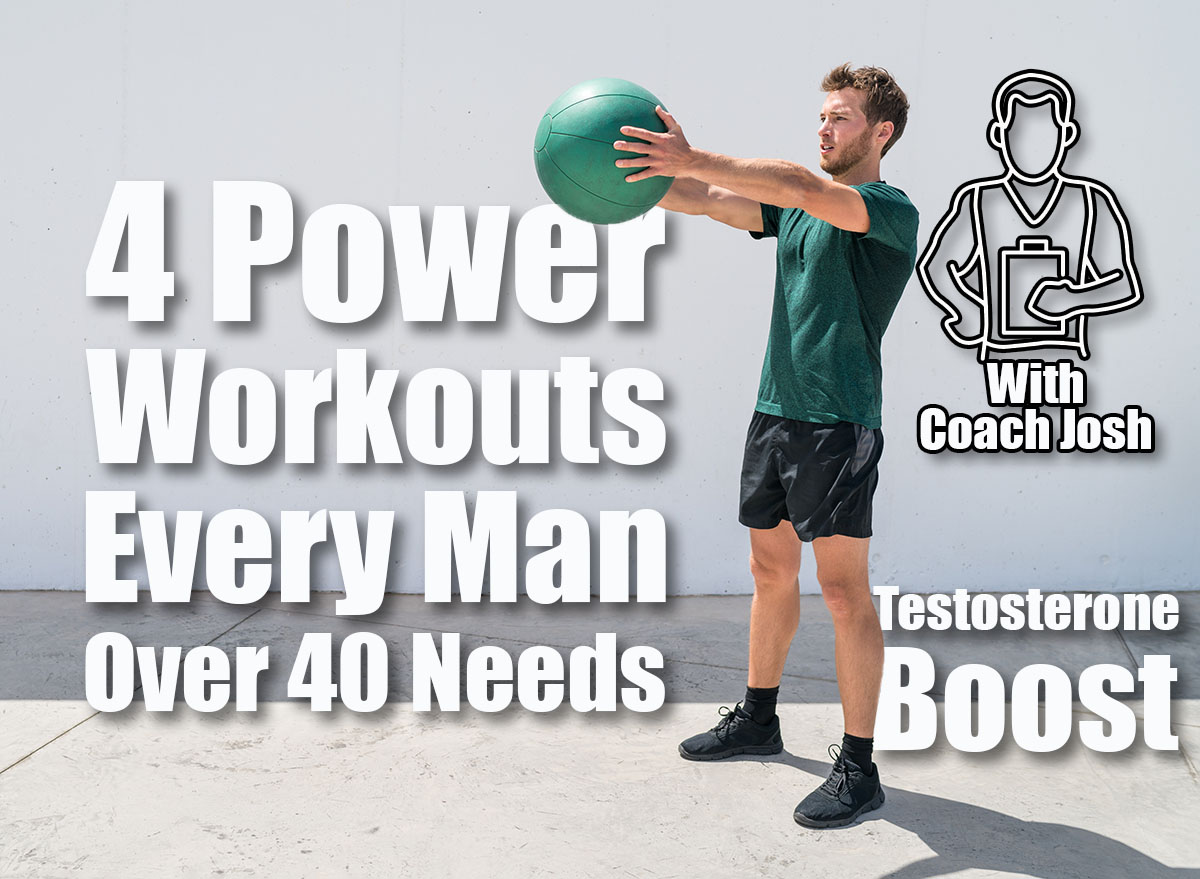
If you’ve hit your 40s and noticed that your body doesn’t bounce back like it used to, you’re not alone. The reality is that men face significant changes in strength, hormone levels, and recovery time as they age, making the workout routines that worked in their 20s and 30s less effective—and sometimes counterproductive. Here’s how to adapt your training to work with your body’s changing needs and maintain peak performance well into your later years.
Why Men Over 40 Need a Different Fitness Approach

After 40, men face a number of strength and hormonal changes. One of the biggest factors is the decline in testosterone, which has a direct impact on muscle mass and function. Testosterone is crucial for building and maintaining muscle mass, and when testosterone levels begin to decline, it’s more difficult for the body to build and repair muscle tissue. Neuromuscular efficiency also decreases with age, which plays a crucial role in athletic performance, coordination, and power.
As we age, our bodies change. The physical fitness of a man in his 20s is much more enhanced than a man in his 40s. It takes much longer to recover when you’re in your 40s, so you need longer rest periods and to exercise in a way that minimizes injury risk. With hormonal shifts, it is harder for men in their 40s to gain muscle and burn fat. As we age, our priorities and lifestyles also shift – many men have less time to focus on fitness, and their goals shift to performance and longevity, not just gains.
How Power Workouts Address These Challenges
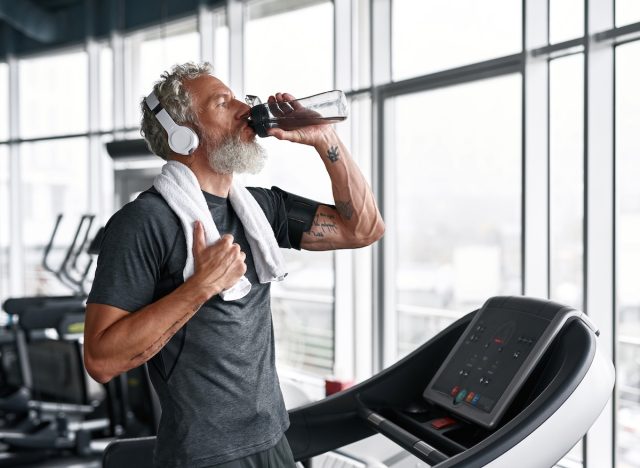
Power workouts emphasize strength, mobility, and coordination, all areas that need to be focused on as we age. Combining strength with speed and coordination stimulates testosterone generation and neuromuscular function. Power workouts are also shorter in duration, reducing cortisol buildup and minimizing injury risk.
This approach specifically targets the hormonal and physical changes that men experience after 40, working with your body’s natural processes rather than against them.
The 4 Essential Power Workouts
Workout 1: Lower Body Power
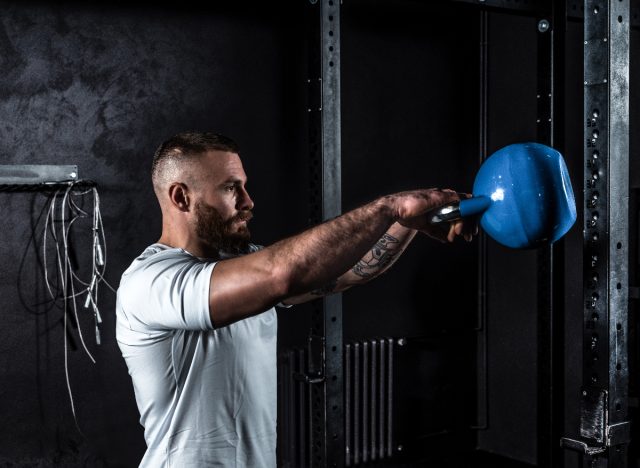
The Routine:
Start with a dynamic stretching warmup of leg swings to engage your muscles. Complete three sets of 12 with one minute of rest between each exercise:
- Barbell Back Squats
- Kettlebell Swings
- Bulgarian Split Squats
Finish with foam rolling and static stretches.
What It Targets: These workouts target testosterone, leg power, building muscle mass, and stability and coordination.
Equipment: Barbell, kettlebell, and workout bench. For at home alternatives, you can use your bodyweight and a chair.
Scaling: For different fitness levels, start out with no weights, focusing on engaging muscle groups and perfecting form. As you advance, build up the weights you use for workouts.
Recovery: Avoid consecutive leg days for the best recovery. Prioritize rest and proper nutrition to prevent injuries.
Workout 2: Upper Body Power

The Routine:
Start with dynamic stretching warmup of arm circles and resistance band pulls. Complete three sets of 12 with one minute of rest between exercises:
- Medicine Ball Slams
- Dumbbell Bench Press
- Pull-Ups
What It Targets: These workouts also target testosterone generation, upper-body muscle mass, power and strength.
Equipment: Medicine ball, dumbbells, bench, and pull-up bar. For at home alternatives, you can use a sandbag or a basketball, water jugs, and perform push-ups instead of pull-ups.
Scaling: For different fitness levels, again begin with lower weights then work your way up as you build strength and perfect form.
Recovery: Focus on mobility during recovery, and space out arm days to get plenty of rest.
Workout 3: Full-Body HIIT

The Routine:
Start with a cardio warmup of brisk walking or jumping rope for 5 minutes. Perform HIIT circuits three times with 30 seconds rest between exercises:
- One minute of burpees
- One minute of squat jumps
- One minute of mountain climbers
What It Targets: These movements target cardiovascular health, fat loss, and testosterone generation.
Equipment: For these exercises, no equipment is needed, and these can easily be done at home. All you need is enough space for movement.
Scaling: For beginners, rest for one minute in between each exercise. As you build endurance, add more exercises into the circuit.
Recovery: Be sure to stretch after this workout, hydrate, and eat plenty of protein.
Workout 4: Core Control
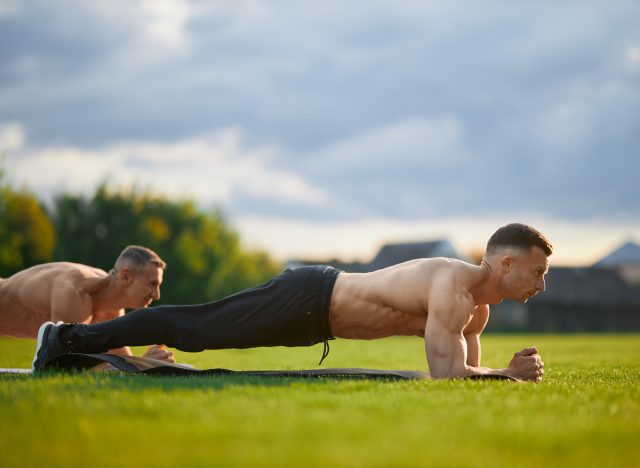
The Routine:
Start with cat-cow stretching movements, then complete:
- One minute plank
- One minute Russian Twists (3 reps with 30 seconds rest between)
- Single-leg glute bridges (3 reps of 12 on each leg)
What It Targets: These movements target core control, coordination, and cortisol levels.
Equipment: For these exercises, all you will need is a weight or medicine ball and enough space for movement.
Scaling: For beginners, start with 30 seconds of planking and Russian Twists. Once you build up core strength, increase the time to one minute. For Russian Twists, start with no weight then increase. Begin with a two-leg bridge before advancing to a single-leg glute bridge.
Recovery: Core workouts can be done during active recovery days. Properly hydrate and eat plenty of protein before and after core workouts.
How to Schedule Your Weekly Workouts
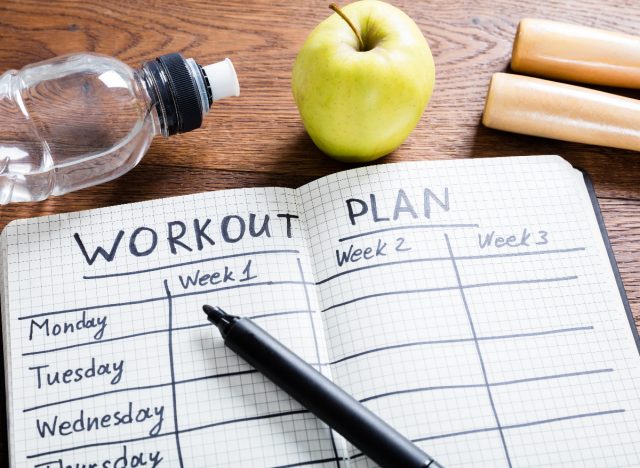
When starting out, focus on working out 2-3 times a week, prioritizing recovery. Once you begin to build up endurance, implement more workouts for 3-5 workouts a week. It’s also important to remember to continue moving on rest days. Rotate your workouts for a different area of focus each day, to not overwork muscle groups and ensure you are working your full body.
Nutrition and Lifestyle Factors for Maximum Results

Protein intake should be a priority for men over 40, and diets should consist of healthy fats, minimal carb, sugar, and alcohol intake, and optimal hydration. Lifestyle also plays a huge role in maintaining fitness goals, and some factors to focus on include prioritizing sleep, managing stress, and avoiding overworking your body.
Men over 40 should aim for 7-8 hours of sleep each night to maximize recovery and regulate hormones. Managing stress is also key, as cortisol can lower testosterone levels – focus on mental health and taking the time to prioritize wellbeing.
When to Expect Results

The typical timeline for results, when consistent, is increased energy within the first two weeks, noticeable strength gains in a month, fat loss in six weeks, and a noticeable difference in muscle growth in the first two months. Results and timelines look different for every individual, so it’s important to remember that you are on your own path and fitness journey.